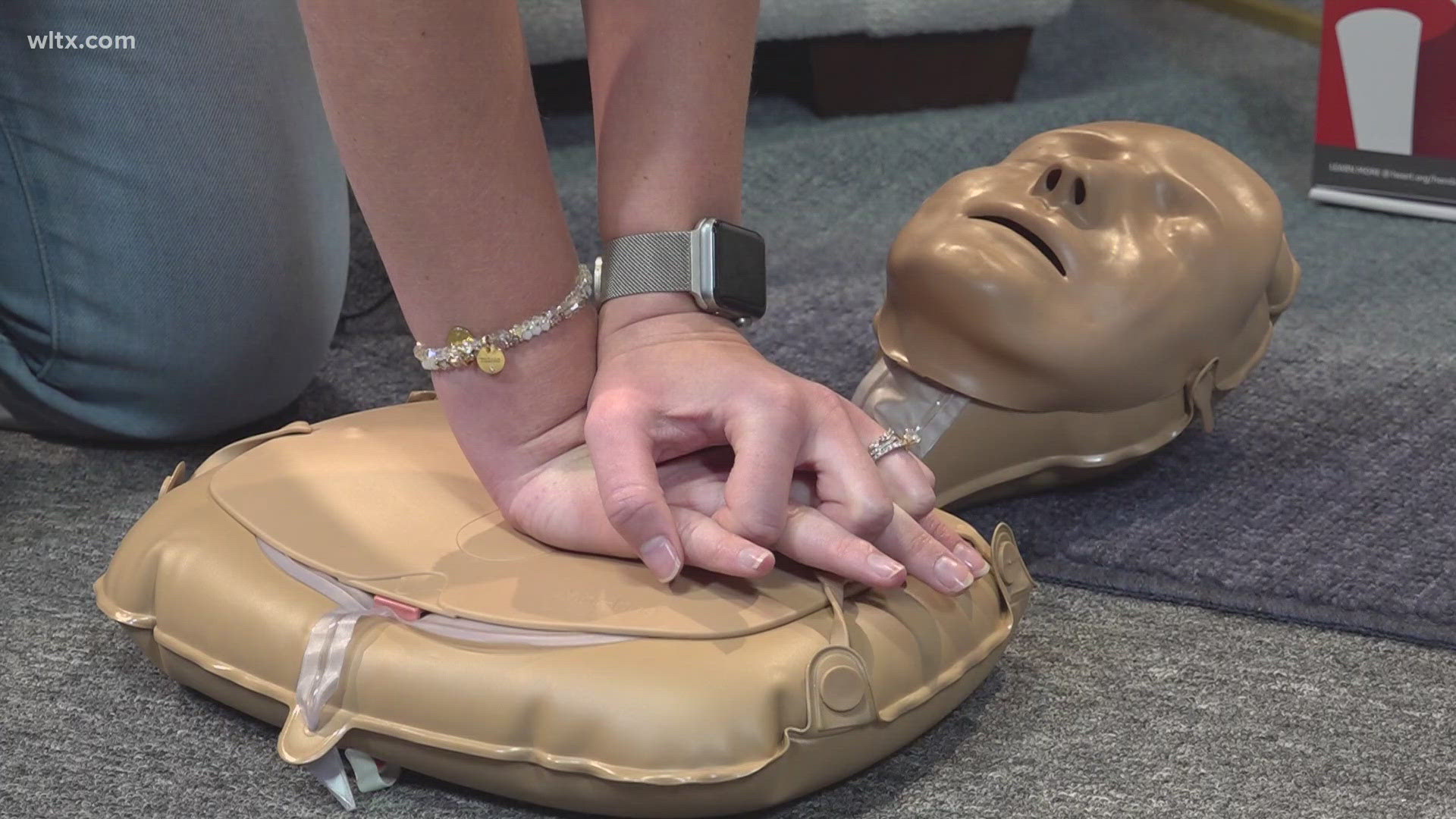COLUMBIA, S.C. — Restart A Heart Day will be recognized on October 16th worldwide. It’s an initiative to raise awareness about the importance of bystander CPR, with hopes to increase the number of people who know CPR.
“There are more than 300,000 cardiac deaths per year and we really want to make sure that we are increasing survival. We know that CPR can double or triple the chance of the survival rate, so the more people that know CPR, the better” said Maranda Williams with the American Heart Association in the Midlands.
The event is something the American Heart Association of the Midlands is getting behind in hopes of increasing survival in the community in cases of sudden cardiac arrest.
“Cardiac arrest, unfortunately, we hear so many of them that happen at school, so many of them that have been at sports fields, at practice for football. We really want to make sure that cardiac emergency response plans are enacted in schools, because if we don't know what to do, then we won't know what to do, right? If somebody passes out, then we're scrambling trying to figure out what to do,” Williams said.
It’s why state representative Brian Lawson says he’s worked with the American Heart Association to introduce the Smart Heart Act, which he says they will pre-file in December.
“Right now the schools in South Carolina have an AED at the school, but there's no requirement to have that within a certain distance or time frame from where the athletics are being played so that's what this bill would do, and it would make them have to come up with a plan that if athletes suffered sudden cardiac arrest then the AED would have to be available within a certain distance, or a certain amount of time,” Lawson said.
The American Heart Association tells me they teach people hands only CPR.
“We say there's two step to hands only CPR. You want to call 911 so those first responders, the real experts, can get there and get the job done and bring that person the best care that they deserve and need. Then what we would do is, while 911 in the ambulance is on the way, you push fast and hard in the center of the chest, at 120 beats per minute,” Lizzie Tankersley with the American Heart Association of the Midlands, said.
She says to do the following when performing hands only CPR.
“You will take your dominant hand on the bottom, your nondominant hand goes on top. You lock your elbows and you want to be like fully over the person, and using this hard bone and like the heel of your hand, you're going to lock those elbows and use your full body weight to lean into it. Again, you want to go about two inches deep to make sure that you're getting getting to the heart,” Tankersley said.
The association says hands only CPR is simple and effective
“What we can do best as bystanders is we can manually pump that heart and the oxygen in the oxygen rich blood coming in and out of your heart. The oxygen rich blood is getting enough oxygen to your brain that, as bystanders, we just have to remember to do the compressions,” Tankersley said.
To look for CPR classes in the Midlands click here.

